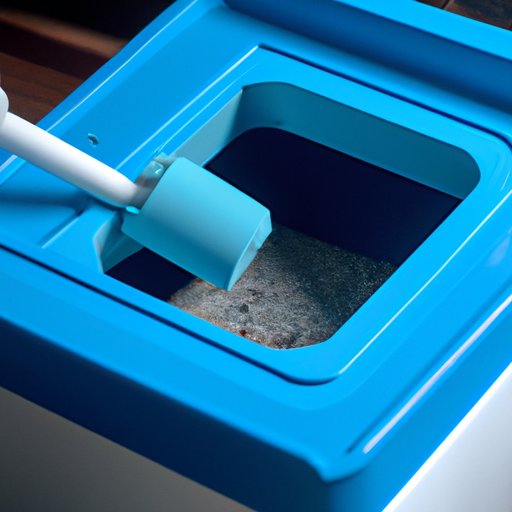
I. Introduction
Flushing cat litter may seem like a convenient option for pet owners. However, this practice can cause serious harm to the environment and plumbing systems. In this article, we will explore the pros and cons of flushing cat litter, as well as alternative options for disposal and tips for safe flushing.
II. The Advantages and Disadvantages of Flushing Cat Litter: A Comprehensive Guide
Flushing cat litter can be convenient for pet owners who want to avoid the hassle of disposing of it manually. Additionally, flushing can help control the odor associated with cat litter. However, there are many disadvantages to flushing cat litter as well. One of the biggest risks is potential plumbing problems. Flushing large quantities of litter can cause blocked pipes and damage to septic and sewer systems. It is essential to weigh all advantages and disadvantages before deciding whether to flush cat litter or not.
III. Why Flushing Cat Litter Can be Harmful to the Environment and Your Plumbing
Flushing cat litter can have serious environmental consequences. Cat waste contains harmful bacteria and parasites, which can contaminate waterways if flushed. This contamination can cause detrimental effects on aquatic wildlife. Additionally, cat litter is often made of clay, which is not biodegradable, and can cause serious damage to plumbing systems if flushed, leading to costly repairs. There have been significant real-world damages to plumbing systems due to individuals flushing non-flushable items, including cat litter.
IV. Cat Litter Flush or Trash: The Pros and Cons of Both Options
Disposing of cat litter in the trash is the most common and consistent practice for pet owners. There are composting options as well, but this requires a greater effort on the part of pet owners. Comparatively, flushing cat litter is less environmentally friendly than to dispose of it in the trash, however, there are advantages to flushing, such as odor control. It is always important to weigh all advantages and disadvantages before deciding which option is best for the individual.
V. How to Safely Flush Cat Litter without Causing Harm
If pet owners decide that flushing cat litter is the best option for them, there are precautions they can take to ensure it is done safely. First, use litter specifically marked as safe for flushing. These litters are biodegradable and do not contain clay. Second, avoid flushing excessive amounts of litter at once, as this can cause clogs and damage to plumbing systems. Lastly, do not flush soiled litter or any packaging containing litter as these can cause issues with plumbing while harming the environment.
VI. The Do’s and Don’ts of Flushing Cat Litter: What You Need to Know
If a pet owner decides to flush cat litter, there are a few do’s and don’ts to follow. Do use litter that is biodegradable and safe for flushing. Do flush only in small amounts like one scoop at a time. Don’t flush soiled litter and items packaging that contain cat litter. By following these guidelines to flush cat litter, you can prevent harm to plumbing systems and the environment.
VII. Environmental Impact of Cat Litter: Why Flushing May Not be the Best Option
It is worth noting that cat litter’s environmental impact is not always apparent to pet owners. Manufacturing cat litter requires resources and energy, resulting in a carbon footprint. Disposing of it incorrectly can harm the environment. If pet owners want minimizes the environmental impact of their pet waste disposal, they should use biodegradable litter and compost waste, especially when opting to flush cat litter.
VIII. Conclusion
With different options for disposal, pet owners must consider the environmental and plumbing implications of their choices. Flushing cat litter, while seemingly convenient, is not worth the risks. In contrast, disposing of cat litter in the trash or composting it may require extra effort, but it’s environmentally friendly. It’s always essential to make an educated decision when keeping our environment healthy, following proper disposal protocol to reduce pet waste’s impact on both the environment and infrastructure is crucial.




